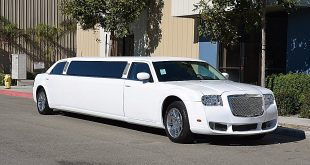Eid-ul-Fitr, also known as the “Festival of Breaking the Fast,” is a significant religious holiday celebrated by Muslims worldwide. It is a time of celebration, giving thanks, and camaraderie as it signifies the conclusion of Ramadan, the Islamic holy month of fasting. The eid-ul-fitr 2024 will be on Monday, April 8.
Understanding Eid-ul-Fitr
Origins and Significance
Eid-ul-Fitr holds deep religious and cultural significance in Islam. It commemorates the end of Ramadan, during which Muslims fast from dawn until sunset, focusing on spiritual reflection, prayer, and acts of charity.
Spiritual Significance
Beyond its cultural celebrations, Eid-ul-Fitr symbolizes the spiritual renewal achieved through fasting and devotion during Ramadan. It’s a time for Muslims to express gratitude for the strength and guidance received throughout the holy month.
When is Eid-ul-Fitr Celebrated?
Determination of the Date
The date of Eid-ul-Fitr is determined by the sighting of the new moon, marking the end of Ramadan. Islamic communities rely on moon sightings or astronomical calculations to determine the precise timing.
Global Observance
Eid-ul-Fitr is celebrated globally, with variations in traditions and customs across different regions and cultures. It’s a public holiday in many Muslim-majority countries, marked by festive events and communal prayers.

Preparations and Festivities
Pre-Eid Preparations
Preparations for Eid-ul-Fitr often begin days in advance, with families cleaning and decorating their homes, shopping for new clothes, and preparing special meals and sweets.
Day of Eid-ul-Fitr
On the day of Eid-ul-Fitr, Muslims gather early in the morning for special prayers known as Salat al-Eid, held in mosques or large open spaces. After prayers, families come together to exchange greetings and enjoy elaborate feasts.
Traditional Foods
Traditional Eid-ul-Fitr dishes vary by region but often include sweet treats like baklava, sheer khurma, and maamoul, along with savory dishes such as biryani, kebabs, and samosas.
Joyous Occasions and Traditions
Family Gatherings
Eid-ul-Fitr is a time for families to come together, share meals, and exchange gifts.It’s a time to celebrate reestablishing ties to family, friends, and the community.
Gift Giving
Gift-giving is a common tradition during Eid-ul-Fitr, symbolizing generosity and goodwill. Families exchange presents, especially among children, spreading joy and happiness.

Acts of Charity
Charity, known as Zakat al-Fitr, is obligatory before the Eid prayers, ensuring that even the less fortunate can partake in the celebrations. It’s a reminder of the importance of compassion and solidarity in Islam.
The Enjoyment of Eid-ul-Fitr
Festive Atmosphere
Eid-ul-Fitr is characterized by a festive atmosphere, with streets adorned with lights and decorations. Markets bustle with shoppers, and music and laughter fill the air as people celebrate together.
Dressing Up
Renewal Through Attire
Wearing new clothes on Eid-ul-Fitr signifies a fresh beginning, both spiritually and aesthetically. It’s a way for individuals to cleanse themselves of any impurities and start afresh with a sense of rejuvenation.
Symbolism in Dress
The choice of attire for Eid-ul-Fitr often reflects cultural heritage, personal style, and religious values. Many opt for traditional garments, while others embrace modern fashion trends, creating a vibrant tapestry of colors and designs.
Vibrant Colors and Intricate Designs
The attire worn on Eid-ul-Fitr is characterized by its richness and diversity. Vibrant hues like vibrant greens, deep blues, and radiant reds dominate the fashion landscape, symbolizing joy, prosperity, and vitality. Intricate embroidery, embellishments, and intricate patterns further enhance the beauty of the garments, adding an element of opulence and sophistication.
Expressing Identity and Individuality
Dressing up for Eid-ul-Fitr is not just about adhering to tradition; it’s also a means of self-expression and celebration of identity. Whether donning traditional attire passed down through generations or experimenting with contemporary fashion, individuals express their unique personalities and cultural affiliations through their clothing choices.

Festive Atmosphere
The streets come alive with the vibrant colors and exuberant attire of Eid-ul-Fitr revelers. Markets buzz with activity as people shop for new clothes, accessories, and jewelry, adding to the festive ambiance. The air is filled with excitement and anticipation as families prepare to celebrate this joyous occasion in style.
Modern Fashion
Dressing up for Eid-ul-Fitr is more than just putting on new clothes; it’s a symbolic gesture of renewal, identity, and celebration. From traditional attire to modern fashion, individuals express their joy and reverence for the occasion through their sartorial choices, adding to the festive spirit of this auspicious day.
Delectable Dishes
Eid-ul-Fitr celebrations are incomplete without the indulgence in a delightful array of sweet treats and delicacies. This cherished tradition brings families and communities together as they savor the rich flavors and aromatic spices of these delectable dishes.
Cherished Tradition
Wearing new clothes on Eid-ul-Fitr is a cherished tradition, symbolizing renewal and purification. People dress in their finest attire, often featuring vibrant colors and intricate designs, to mark the joyous occasion.
Sweet Treats and Delicacies
Sweets play a central role in Eid-ul-Fitr celebrations, with households preparing an array of delectable treats to share with guests and neighbors. From traditional desserts to homemade delights, the feast is as much a feast for the senses as it is for the palate.
Traditional Delights
Sweet treats hold a special place in Eid-ul-Fitr festivities, with each region boasting its unique selection of traditional delicacies. From the rich flavors of baklava to the creamy goodness of sheer khurma, these sweets are a testament to centuries-old culinary traditions passed down through generations.
A Feast for the Senses
The sight and aroma of these sweet delicacies evoke feelings of warmth and nostalgia, transporting individuals back to cherished memories of past celebrations. With every bite, the symphony of flavors tantalizes the taste buds, leaving a lingering sweetness that lingers long after the last morsel has been savored.
Sharing Joy and Generosity
Sharing sweet treats during Eid-ul-Fitr is not merely a culinary custom but a gesture of generosity and hospitality. Families prepare an abundance of sweets to share with relatives, neighbors, and those less fortunate, spreading joy and goodwill within the community.

Culinary Creativity
While traditional sweets remain a staple of Eid-ul-Fitr celebrations, many households also indulge in culinary creativity, experimenting with new flavors and recipes to add a modern twist to the festivities. From intricately decorated cakes to innovative fusion desserts, these culinary creations reflect the diversity and dynamism of contemporary Eid-ul-Fitr cuisine.
Bonding Over Food
Eid-ul-Fitr is a time for families to come together and bond over shared meals and sweet treats. As loved ones gather around the dining table, they not only indulge in delicious delicacies but also create cherished memories that will last a lifetime.
Central Role
Sweet treats and delicacies play a central role in Eid-ul-Fitr celebrations, symbolizing joy, abundance, and togetherness. Whether savoring traditional favorites or exploring new culinary creations, individuals come together to indulge in the rich flavors and festive spirit of this auspicious occasion.
Conclusion
Eid-ul-Fitr is a time of spiritual reflection, gratitude, and joy for Muslims worldwide. It’s a celebration of faith, community, and the blessings of Ramadan, marked by prayers, feasting, and acts of generosity. As families and friends come together to share in the festivities, Eid-ul-Fitr serves as a reminder of the importance of unity, compassion, and hope.

FAQs
What is the significance of Eid-ul-Fitr?
Eid-ul-Fitr marks the end of Ramadan, the Islamic holy month of fasting, and is a time of celebration, gratitude, and spiritual renewal.
How is the date of Eid-ul-Fitr determined?
The date of Eid-ul-Fitr is determined by the sighting of the new moon, marking the end of Ramadan, and varies depending on lunar observations.
What are some traditional Eid-ul-Fitr dishes?
Traditional Eid-ul-Fitr dishes include sweet treats like baklava and sheer khurma, as well as savory delights such as biryani and kebabs, enjoyed by families and communities during the festivities.
Why is gift-giving important during Eid-ul-Fitr?
Gift-giving during Eid-ul-Fitr symbolizes generosity, goodwill. There is a spirit of sharing, fostering a sense of community and togetherness among family and friends.
How do Muslims celebrate Eid-ul-Fitr?
Eid-ul-Fitr is a religious holiday celebrated by Muslims by attending special prayers. Also sharing festive meals with loved ones, contributing to charity. Moreover demonstrating kindness and compassion.
 Daily Blogger News Stay updated with the latest trends and insights. Your reliable source for daily updates and information.
Daily Blogger News Stay updated with the latest trends and insights. Your reliable source for daily updates and information.





I have been browsing online more than 2 hours today, yet
I never found any interesting article like yours.
It is pretty worth enough for me. In my opinion, if all webmasters and bloggers made good content
as you did, the net will be much more useful than ever before.
It is the best time to make some plans for the future and it is time to be happy.
I’ve read this post and if I could I desire to suggest
you some interesting things or tips. Perhaps you can write next articles referring to this article.
I desire to read even more things about it!